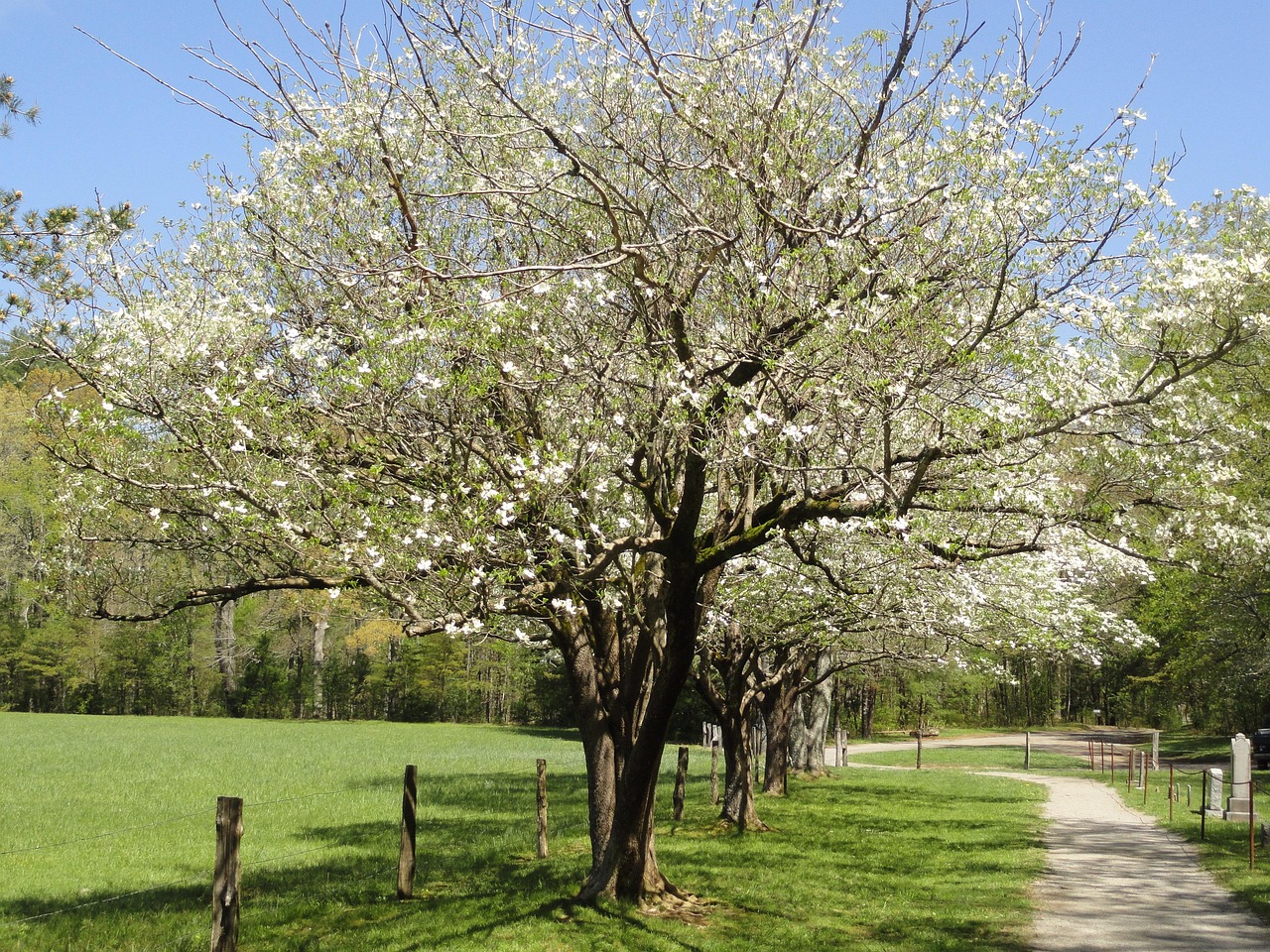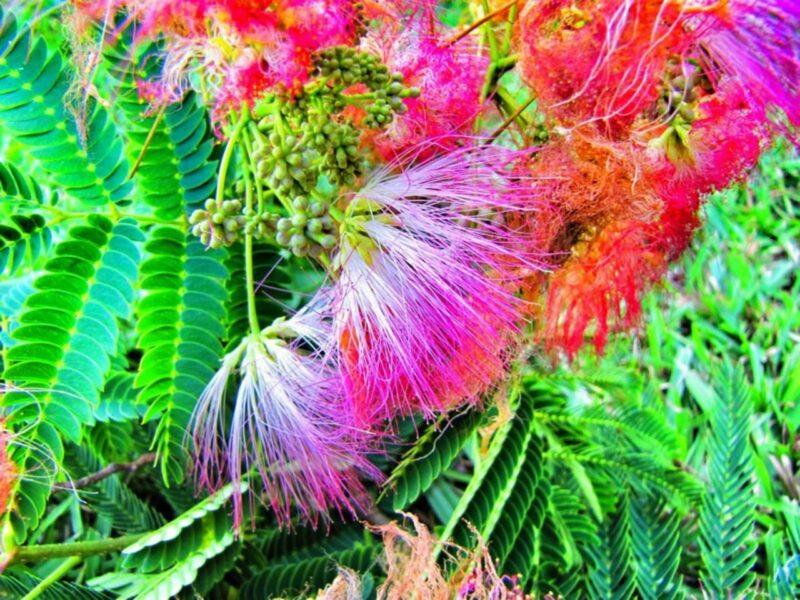Below, we’ll explore an array of smaller trees that luxuriate in sunlight, each bringing unique charm and characteristics to your outdoor space.
Japanese Maple
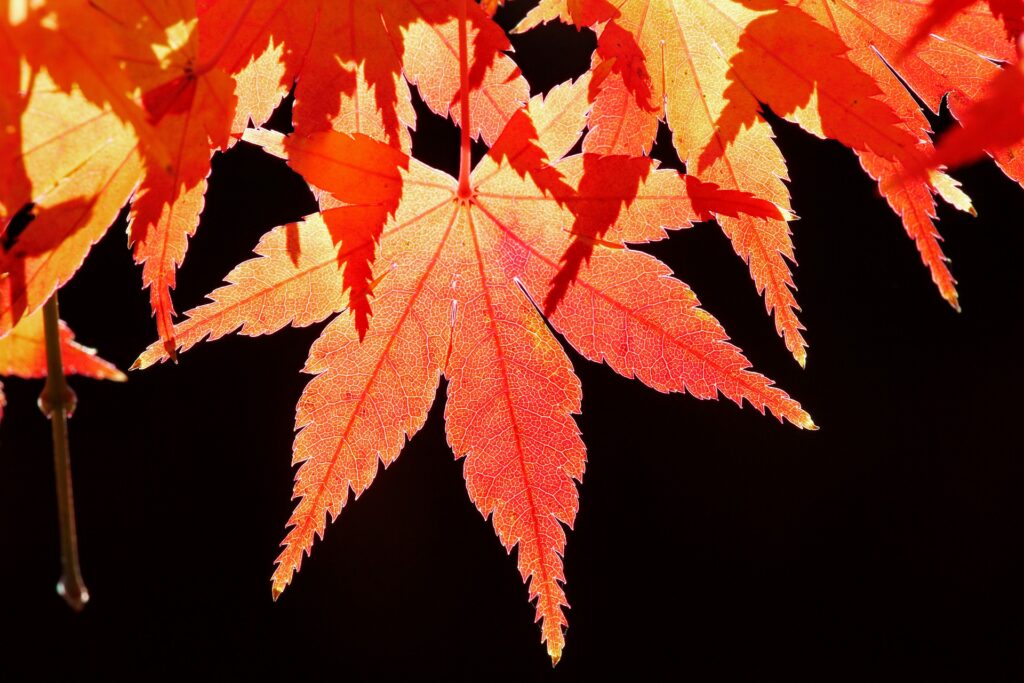
Known for its stunning foliage and graceful structure, the Japanese Maple (Acer palmatum) is a beloved choice among landscapers and gardeners alike. With various cultivars available, these small trees can offer a range of colors—from deep reds to vibrant greens—and shapes, making them ideal focal points in your garden.
The typical height of a Japanese Maple can range from 6 to 25 feet, depending on the specific variety. They flourish in hardiness zones 5 to 8, making them adaptable to many climates. Plant them in well-drained soil and protect them from harsh winds to keep their foliage looking pristine. The delicate leaves provide excellent fall color, transforming into bright reds and oranges, making your yard a canvas of stunning autumn hues.
Crape Myrtle
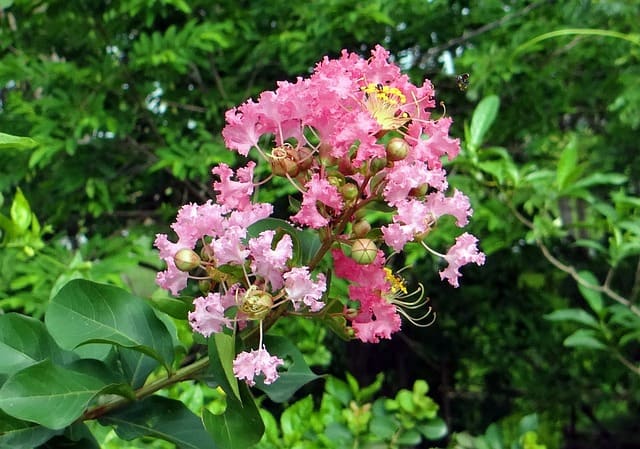
Crape Myrtle (Lagerstroemia indica) is another tree that promises vibrant blossoms throughout the summer. Ranging from 10 to 25 feet in height, this small tree produces clusters of colorful flowers in various shades, including pink, purple, and white.
These trees prefer warm climates and thrive in full sun, making them perfect for southern gardens. Crape Myrtles are resistant to drought once established and can handle a variety of soils, though they perform best in well-drained sites. Their beautiful bark, which peels to reveal a smooth surface beneath, adds winter interest as well.
Hawthorn
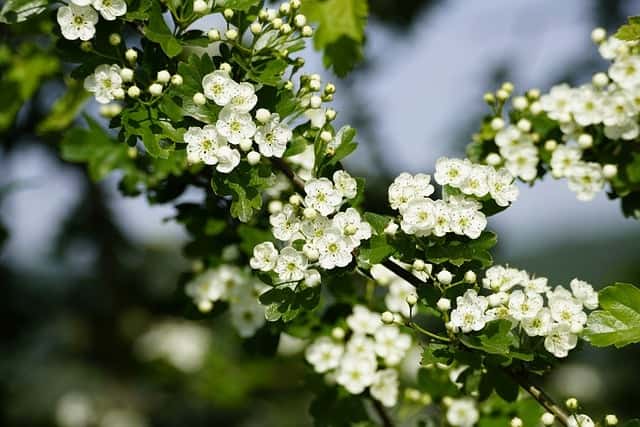
With its stunning spring blossoms and vibrant fall foliage, the Hawthorn (Crataegus spp.) earns its place among the top small trees for sunny landscapes. Typically reaching heights between 15 to 30 feet, Hawthorns feature clusters of white or pink flowers that herald the arrival of spring.
What sets these small trees apart is their attractive fruit, which can range in color from red to yellow. Additionally, they are known for their thorny branches, which add an intriguing texture to your garden. Hawthorns adapt well to a variety of soil conditions and are surprisingly resilient against drought, making them a low-maintenance choice for homeowners.
Dwarf Alberta Spruce
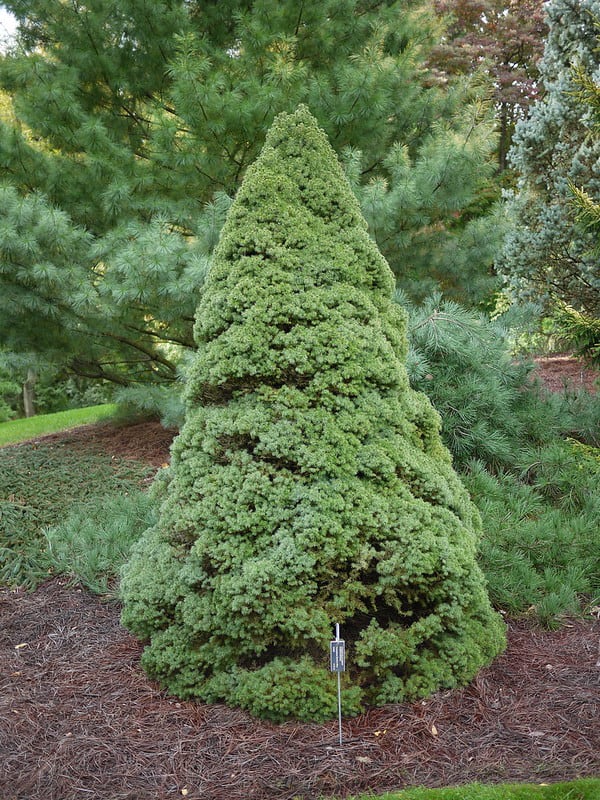
The Dwarf Alberta Spruce (Picea glauca ‘Conica’) is a coniferous gem that can be a true asset in any landscape. Reaching heights of only 4 to 10 feet, this small tree serves as a wonderful anchor in garden beds or borders and offers a stunning vertical element without consuming too much space.
This tree thrives in full sun and prefers well-draining soil, making it a low-maintenance option for gardeners. The distinctive cone shape and lush green needles create a rich contrast against flowering plants, bringing depth to your garden throughout the year. It is also well-suited for container gardening, allowing you to bring a touch of evergreen beauty to patios or balconies.
Redbud
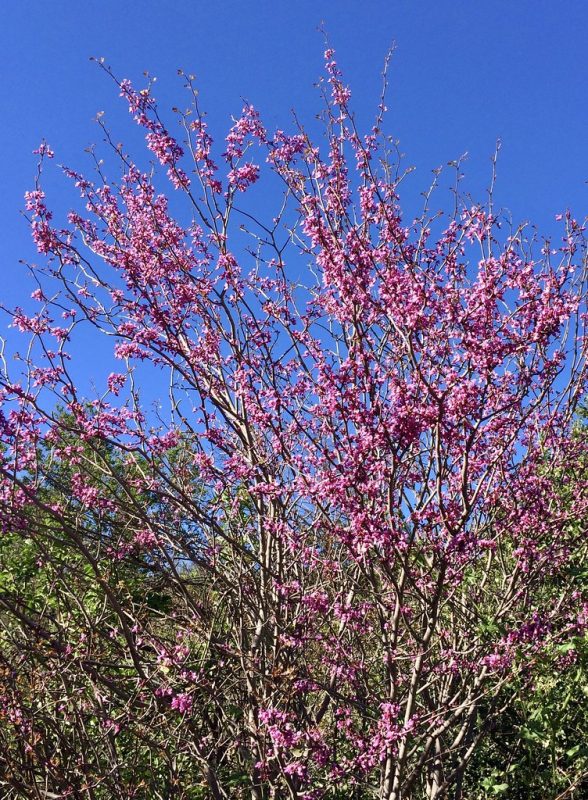
The Eastern Redbud (Cercis canadensis) is a native small tree that packs a punch of color. In early spring, this deciduous tree adorns itself with small, heart-shaped pink flowers, which bloom before the leaves unfurl, creating a stunning spectacle.
Typically reaching heights of 20 to 30 feet, Redbuds thrive in full sun to partial shade. This adaptability allows them to fit well into diverse landscapes. Their striking green foliage turns a brilliant yellow in the fall, which keeps your garden lively throughout the seasons. Besides their beauty, Redbuds also attract butterflies, making them a fantastic choice for pollinator-friendly gardens.
Magnolia
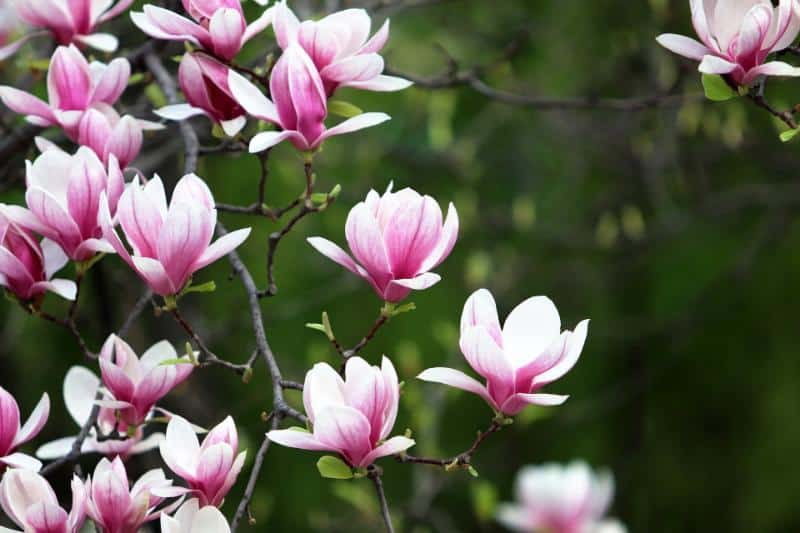
Magnolias are celebrated for their large, fragrant blooms and elegant structures. Small varieties, like the Star Magnolia (Magnolia stellata) or the Sweetbay Magnolia (Magnolia virginiana), add beauty and charm without overwhelming your space.
With a height typically ranging from 10 to 20 feet, magnolias thrive best in full sun, though they can tolerate some shade. The stunning white or pink flowers bloom in spring, captivating passerby with their sweet scent. Their broad leaves provide vital shade during the summer months, making them a functional as well as decorative choice for gardens.
Smoke Tree
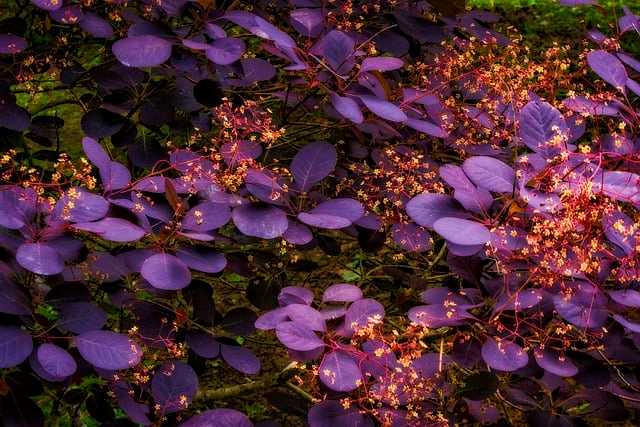
The Smoke Tree (Cotinus coggygria) is renowned for its unique smoky-colored flower clusters that provide an unusual texture in the landscape. Ranging from 10 to 15 feet in height, this tree’s fluffy inflorescences appear in late spring to early summer and create a dramatic visual effect.
In addition to its unusual flowers, the Smoke Tree is celebrated for its stunning autumn foliage, which can range from deep burgundy to bright yellow, creating a stunning contrast in your garden. It’s highly adaptable to various soil types, though it performs best in well-drained conditions. Thriving in full sun, Smoke Trees also offer a wildlife-friendly habitat, attracting birds and pollinators.
Amur Maple
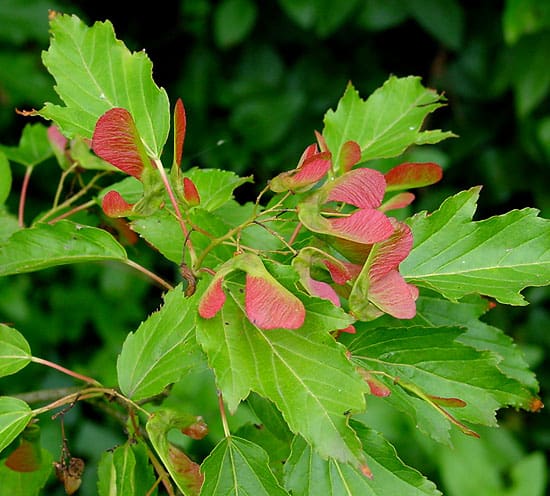
The Amur Maple (Acer ginnala) is a hardy small tree that thrives in full sun with a compact form, typically growing 15 to 20 feet tall. It boasts attractive, trifoliate leaves that emerge bright green in spring and gradually transition to vibrant shades of red and orange in the fall.
Known for its resilience, the Amur Maple can adapt to various soil types and conditions, making it ideal for urban settings. Its beauty is enhanced by clusters of red fruit that attract birds while adding seasonal interest to the landscape. This small tree brings a splash of color throughout the year and provides an attractive backdrop for any garden design.
Dogwood
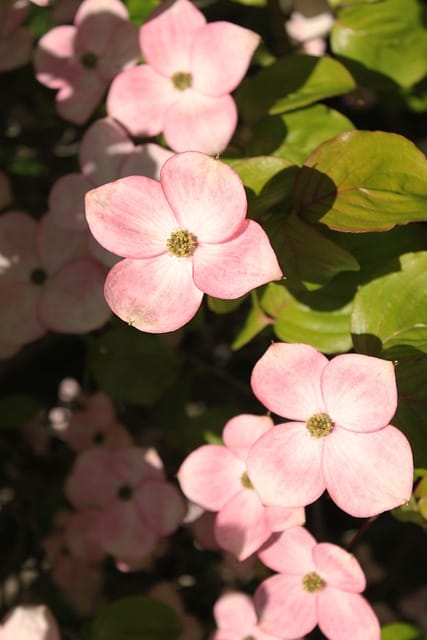
The Dogwood tree (Cornus florida) is a beloved choice for many gardens due to its stunning floral display and appealing structure. Reaching heights of 15 to 30 feet, Dogwoods produce beautiful white or pink flowers in spring that create a striking contrast against its dark green foliage.
These flowering trees prefer full sun to partial shade and thrive in well-drained, fertile soil. Dogwoods are also celebrated for their red berries, which attract wildlife. In addition, their foliage turns a rich burgundy in the fall, providing year-round visual interest.
Serviceberry

Serviceberry (Amelanchier) is an ideal tree for small gardens, offering beauty in multiple seasons. Typically growing to about 15 to 25 feet in height, Serviceberries are appreciated for their delicate white flowers in early spring, juicy edible berries in late spring to early summer, and rich fall colors.
They thrive well in full sun and are adaptable to a variety of soil types, which makes them a versatile choice for gardeners. The berries attract birds and wildlife, adding to the ecological value of your landscape. Serviceberries not only fulfill the visual aspect of a garden but also serve practical uses, as their berries can be harvested for jams, jellies, and desserts.
Chaste Tree
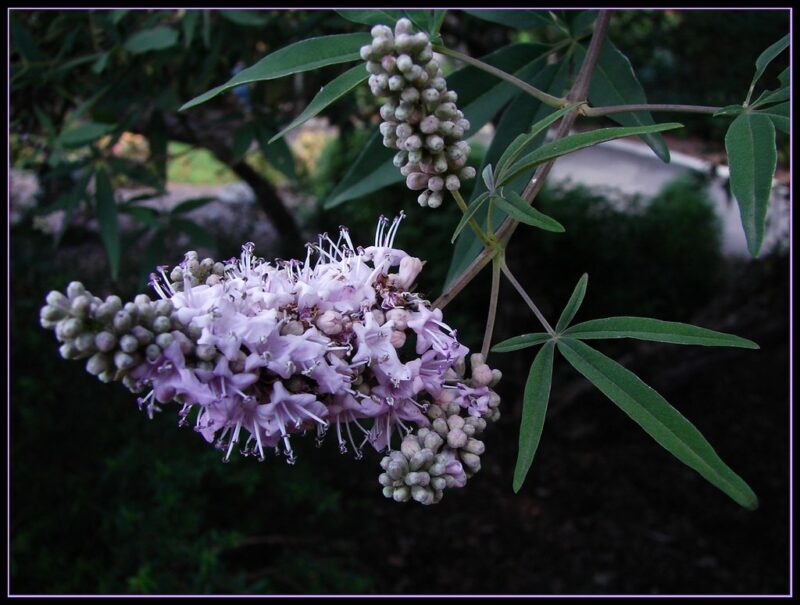
The Chaste Tree (Vitex agnus-castus) adds an exotic flair to sunny landscapes, reaching heights of 10 to 20 feet. With aromatic leaves and stunning spikes of purple flowers that bloom in summer, the Chaste Tree is a magnet for pollinators like bees and butterflies.
This deciduous tree thrives in full sun and well-drained soil, making it highly adaptable to various gardening conditions. Its drought resistance once established makes it an excellent choice for low-maintenance gardens. In addition to its beauty, the Chaste Tree’s leaves can be utilized for their aromatic properties.
Dwarf Flowering Almond
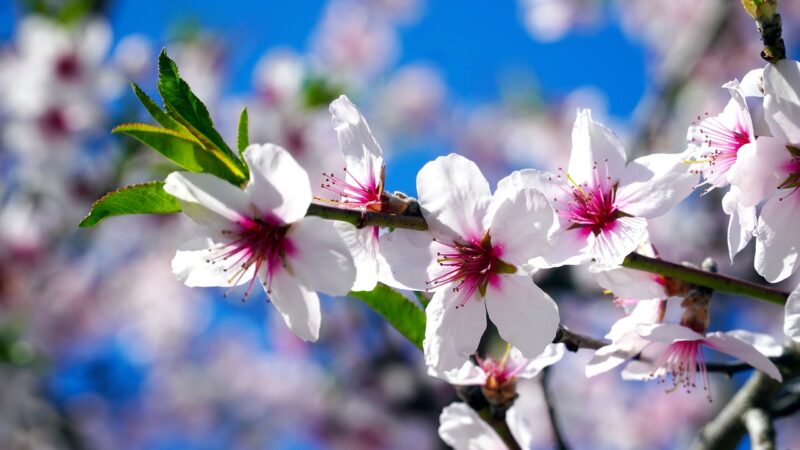
The Dwarf Flowering Almond (Prunus glandulosa) offers a delightful display of pink or white flowers in early spring, making it a perfect ornamental small tree for sunny gardens. Typically reaching heights of 4 to 6 feet, this tree can also be shaped as a hedge or a low border.
Known for its hardy nature, the Dwarf Flowering Almond thrives in well-drained soil and full sun. Its small size makes it especially suitable for patios or smaller urban gardens where space is limited. The beautiful blooms not only enhance the aesthetic value of the landscape but also attract early spring pollinators.
Golden Chain Tree
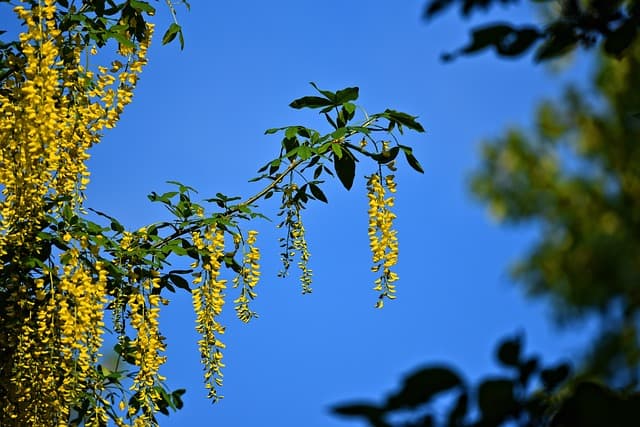
The Golden Chain Tree (Laburnum anagyroides) is cherished for its cascading clusters of yellow flowers that hang like golden tassels in late spring. This eye-catching small tree typically grows to about 25 feet tall, providing dramatic seasonal interest.
Golden Chain Trees flourish in full sun and well-drained soil, making them ideal for sunny garden settings. This tree requires regular watering during its first few years to establish a strong root system but is generally low-maintenance afterward. Its showy blossoms not only make it visually stunning but also attract numerous pollinators during blooming season.
Eastern Red Cedar
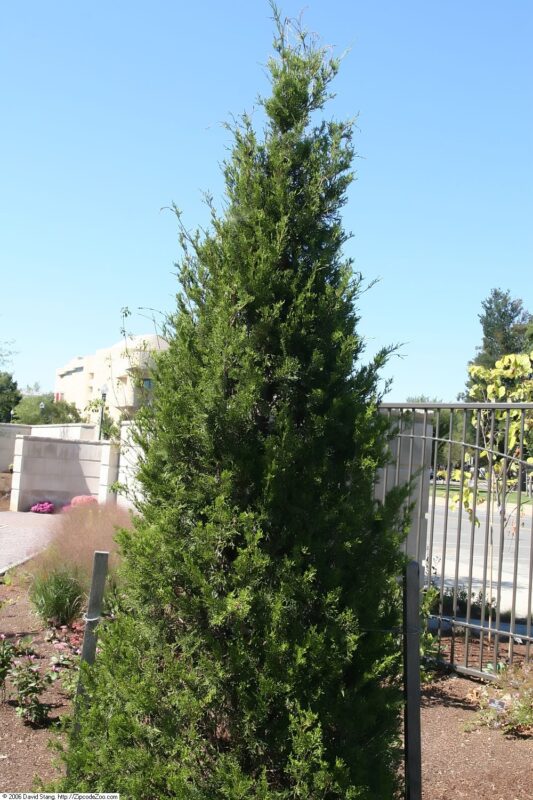
The Eastern Red Cedar (Juniperus virginiana) is a wonderful addition to sunny gardens, reaching heights of 40 feet but can be kept smaller through pruning. This evergreen tree features a dense, conical shape and provides year-round interest with its fragrant foliage.
Possessing excellent drought resistance, the Eastern Red Cedar is well-suited to poor soil conditions and thrives in full sun environments. Its berries are a food source for birds, while the tree itself provides shelter for various wildlife. The aromatic wood of the Eastern Red Cedar is also valued for its durability and resistance to decay.
Japanese Stewartia
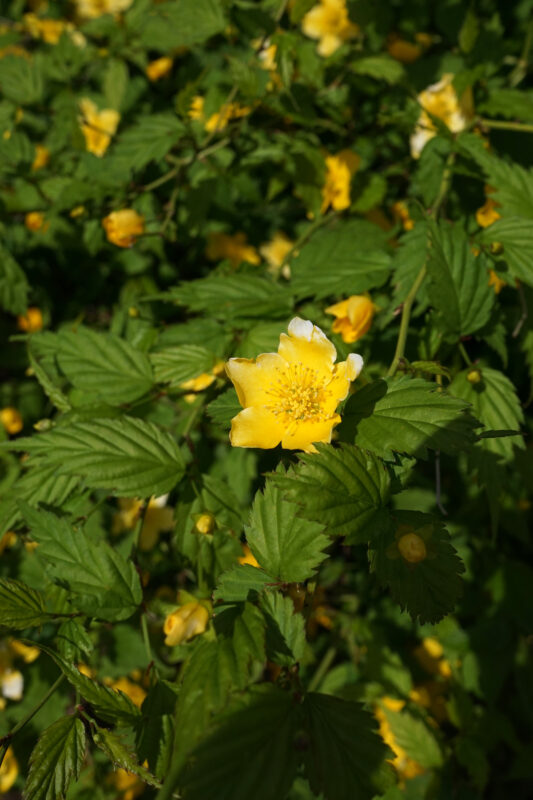
The Japanese Stewartia (Stewartia pseudocamellia) is a striking small tree renowned for its unique, camellia-like flowers and beautiful exfoliating bark. Generally reaching heights of 20 to 30 feet, it adds complexity and visual interest to your garden.
During late spring and summer, Stewartia produces creamy white flowers with yellow stamens that attract beneficial pollinators. This tree thrives in full sun to partial shade and well-drained, acidic soil. In the fall, its foliage transforms into a brilliant array of colors, providing a stunning visual impact long after the flowers have faded.
Crabapple

Crabapple trees (Malus spp.) combine beauty and practicality, reaching heights of 15 to 25 feet. They are renowned for their vibrant spring blossoms in shades of white, pink, or red, which attract bees and butterflies.
These trees thrive in full sun and are adaptable to varying soil conditions, making them a popular choice for home landscapes. The fruits produced by Crabapple trees, while small and sometimes tart, can be utilized for making jellies or enjoyed by local wildlife. Additionally, their foliage features brilliant colors in the fall, ensuring your garden remains captivating year-round.
Lilac
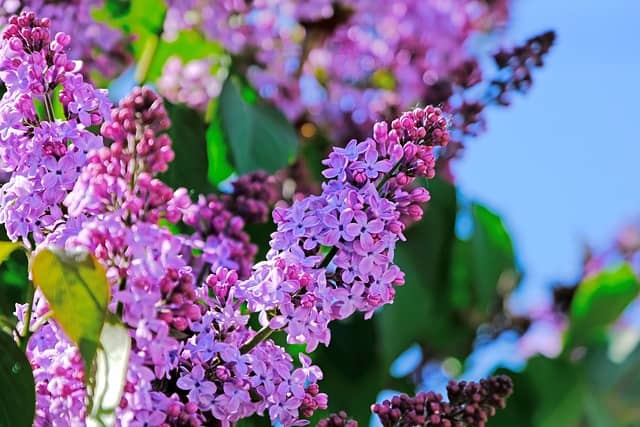
Lilacs (Syringa vulgaris) are synonymous with fragrant spring blooms and are a beloved feature in many gardens. Reaching heights of 6 to 15 feet, they produce clusters of alluring purple, pink, or white flowers that fill the air with a sweet aroma.
Lilacs thrive in full sun and well-drained soil, making them an ideal choice for sunny gardens. This hardy plant is relatively low-maintenance and tolerates dry conditions once established. In addition to their beautiful flowers, lilacs are known to attract pollinators, enhancing the ecological value of your garden.
Paperbark Maple
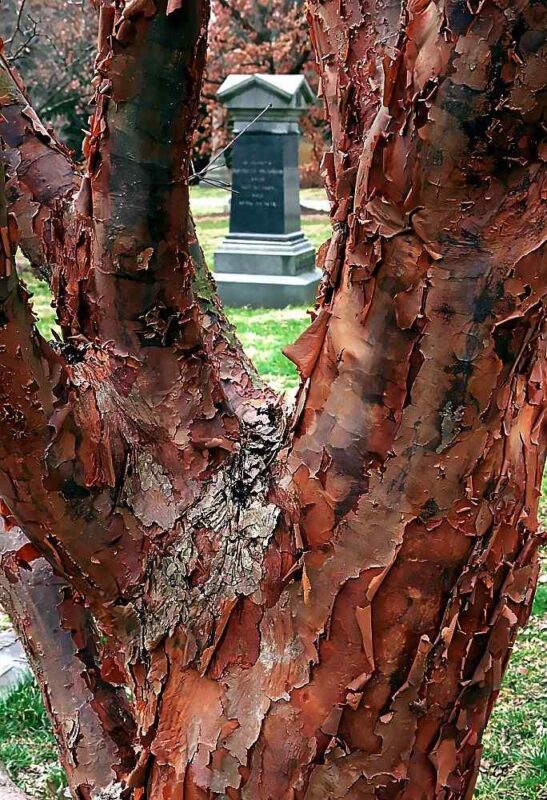
The Paperbark Maple (Acer griseum) is notable for its stunning, peeling bark that reveals a beautiful reddish-brown hue, providing year-round visual interest. Generally growing to 15 to 25 feet, its organic form and outstanding foliage make it a coveted addition to any landscape.
This tree flourishes in full sun and prefers well-drained, loamy soil. In addition to the visual impact of its bark, the Paperbark Maple’s leaves transform to brilliant shades of red and orange in the fall. Its graceful structure and resilience make it an exceptional choice for gardens, adding unique charm and character to the environment.
Silk Tree (Mimosa)
The Silk Tree (Albizia julibrissin), also known as Mimosa, is recognized for its fluffy, pink, silk-like flowers that create an enchanting display in summer. Typically reaching heights of 20 to 40 feet, this small tree provides a tropical feel to sunny gardens.
Mimosas thrive in full sun and prefer well-drained soil. They are drought-tolerant and thrive well in warmer regions. Their fern-like leaves provide an intriguing contrast to the vibrant blooms, and they are known to attract numerous pollinators. However, it is worth noting that Mimosas can sometimes become invasive in certain areas, so it’s essential to check local guidelines before planting.
Fringe Tree
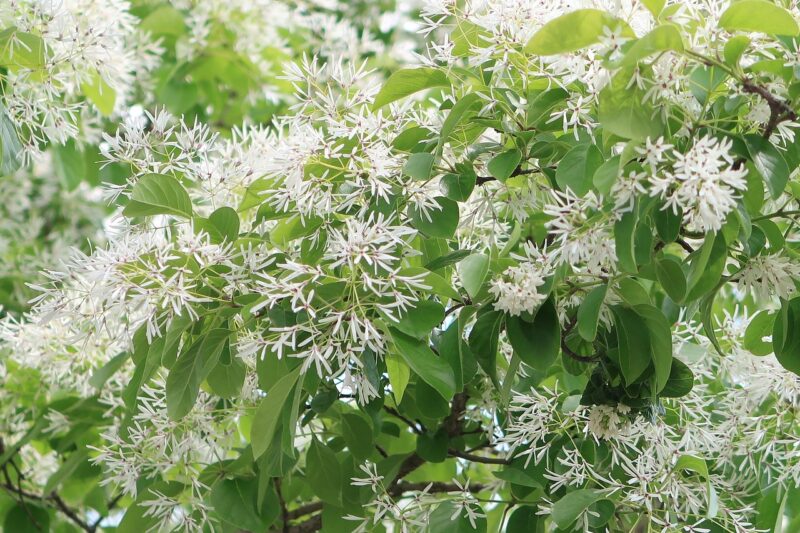
The Fringe Tree (Chionanthus virginicus) is a stunning ornamental tree known for its unique, fragrant white flowers that hang in clusters, reminiscent of delicate fringe. Reaching heights of 12 to 30 feet, this small tree adds a distinctive element to your landscape.
Fringe Trees thrive in full sun to partial shade and prefer well-drained soils. Their flowers bloom in late spring, attracting pollinators and providing an eye-catching display. In addition, Fringe Trees offer vibrant yellow-green foliage in the fall, adding to their allure throughout the seasons.
Flowering Quince
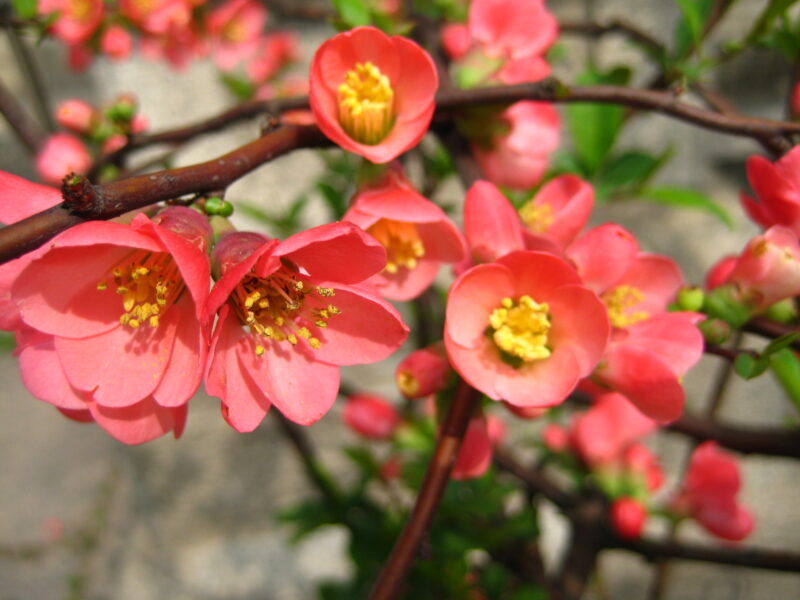
Flowering Quince (Chaenomeles speciosa) is a compact and colorful landscape option that typically grows 3 to 6 feet tall. Renowned for its striking, early spring blooms in fiery colors such as red, orange, or pink, this small tree can create a stunning visual impact.
Flowering Quince thrives in full sun and is tolerant of various soil conditions. The tree produces small, pear-like fruits that, while not commonly consumed, can be used for preserves. Its unique flowers attract bees and other pollinators, making it a beautiful and functional addition to your garden.
Weeping Cherry
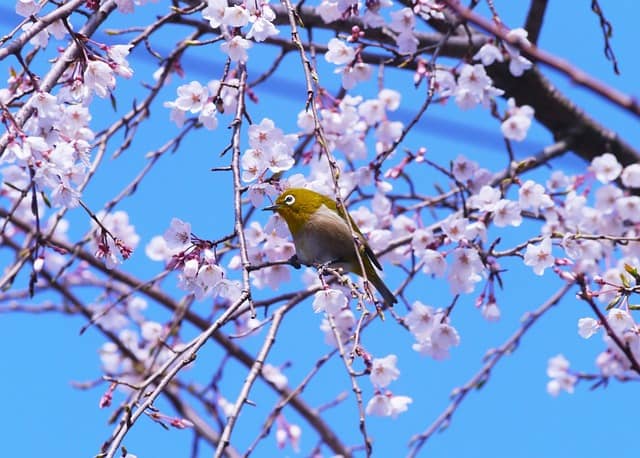
The Weeping Cherry (Prunus subhirtella ‘Pendula’) is a truly enchanting small tree, renowned for its graceful, cascading branches adorned with fragrant blossoms. Typically reaching around 20 to 30 feet, the Weeping Cherry is perfect for adding charm and romance to any sunny landscape.
These trees thrive in full sun and well-draining, fertile soil. The delicate pink or white flowers bloom profusely in early spring. Once the petals fall, the tree’s interesting horizontal branching structure remains an eye-catching focal point. Weeping cherries also have moderate drought resistance, allowing them to thrive even in less than ideal conditions, making them a cherished addition to gardens.
Desert Willow
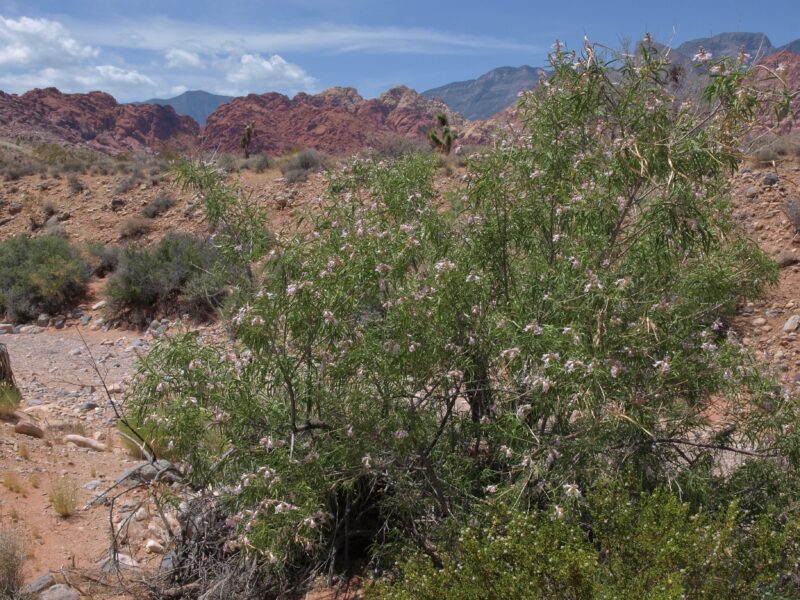
The Desert Willow (Chilopsis linearis) stands out for its long, trumpet-shaped flowers that bloom from spring through fall, providing vibrant splashes of color in arid environments. Reaching heights of around 15 to 25 feet, this small tree offers a unique and exotic appeal.
Desert Willows are well adapted to sunny environments and thrive in well-drained soil, making them an excellent choice for low-water-use gardens. Their flowers attract hummingbirds and butterflies, making them an ecological asset to your landscape. The long, slender leaves create a soft texture that complements the bright blooms beautifully.


